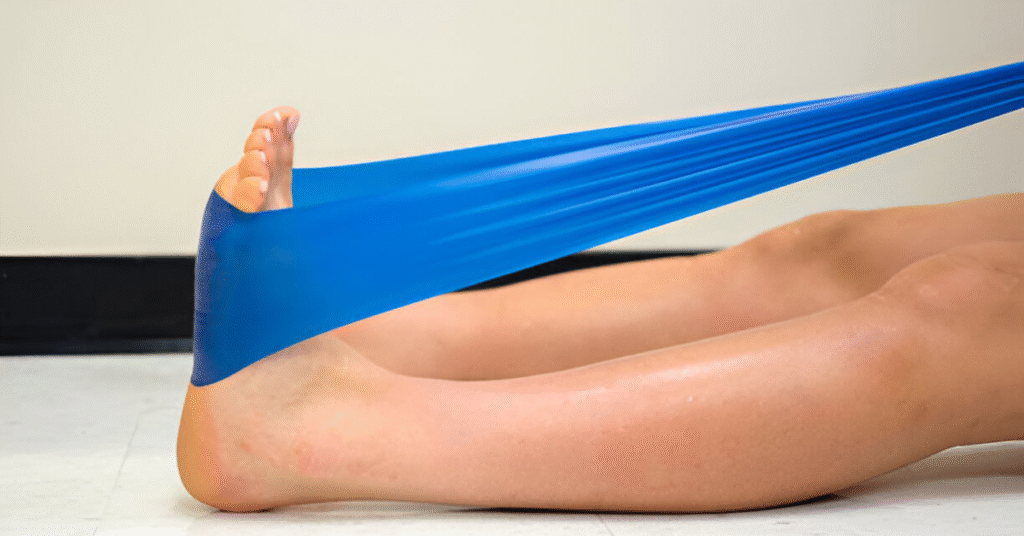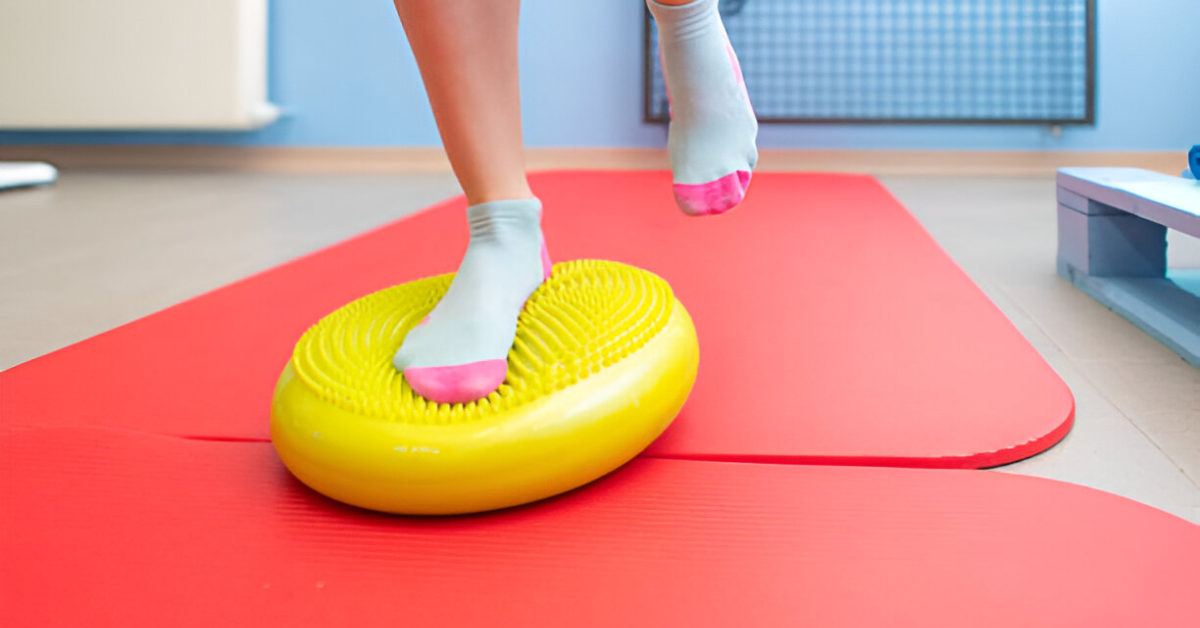Introduction
Foot pain from plantar fasciitis can disrupt your entire day—from those first painful steps in the morning to fatigue and discomfort by evening. At Sole Foot and Ankle in Valparaiso, we see many patients dealing with this common yet treatable condition. One of the most effective tools for relief? Plantar fasciitis exercises.
These targeted stretches and movements not only ease heel pain but also prevent the condition from returning. In this guide, we’ll walk you through what plantar fasciitis is, why it happens, and the most beneficial exercises to help you heal and stay pain-free.
Key Takeaways
- Plantar fasciitis exercises can reduce pain and support healing.
- Regular stretching improves flexibility and relieves strain on the heel.
- Risk factors include flat feet, tight calves, and poor footwear.
- Treatments may include physical therapy, orthotics, and exercise routines.
- Sole Foot and Ankle Valparaiso provides personalized care plans tailored to your lifestyle.
What Is Plantar Fasciitis?
Plantar fasciitis is caused by inflammation of the plantar fascia, a thick band of tissue that runs along the bottom of your foot. This ligament supports your arch and absorbs shock while you walk. When overstressed, the fascia can tear or tighten, leading to sharp pain—especially in the heel.
The condition affects people of all activity levels and is often worsened by prolonged standing or poor foot mechanics. Fortunately, consistent plantar fasciitis exercises can ease discomfort, strengthen foot muscles, and restore mobility.
Causes and Risk Factors
What Causes Plantar Fasciitis?
Plantar fasciitis develops due to stress and microtears in the plantar fascia. This strain can result from:
- High-impact sports (running, jumping)
- Wearing unsupportive shoes
- Walking barefoot on hard floors
- Tight calf or Achilles tendons
- Poor foot alignment (flat feet or high arches)
Risk Factors
Your risk increases if you:
- Are between ages 40–60
- Are overweight or recently gained weight
- Work on hard surfaces all day
- Have limited ankle or calf flexibility
- Neglect regular plantar fasciitis exercises
Symptoms to Watch For
Plantar fasciitis often presents with:
- Heel pain—especially in the morning or after rest
- Tenderness in the arch or bottom of the foot
- Pain after long periods of standing or walking
- Stiffness in the heel
- Discomfort that lessens with movement but returns with rest
If you’re experiencing these symptoms, incorporating plantar fasciitis exercises into your daily routine may help alleviate discomfort.
Diagnosis and Testing
At podiatrists perform a comprehensive evaluation to diagnose plantar fasciitis.
What to Expect:
- Physical Exam: We check for tenderness, swelling, and arch support.
- Imaging: X-rays or ultrasound may be used to rule out bone spurs or fractures.
- Gait Analysis: Identifies poor foot mechanics that contribute to stress on the plantar fascia.
We often recommend plantar fasciitis exercises as part of a first-line, non-invasive treatment plan.
Treatment Options
We approach plantar fasciitis holistically. Many patients benefit from a combination of therapy, footwear changes, and plantar fasciitis exercises.
| Treatment Option | Purpose | Who It’s Best For |
|---|---|---|
| Plantar Fasciitis Exercises | Stretch fascia and support healing | Most patients with mild to moderate symptoms |
| Physical Therapy | Strengthen supportive muscles and improve motion | Patients with recurring pain or poor mechanics |
| Custom Orthotics | Support arches and correct foot posture | Flat feet or overpronators |
| Night Splints | Maintain foot stretch overnight | Morning heel pain sufferers |
| Proper Footwear | Reduce foot strain | Those wearing worn-out or unsupportive shoes |
| Anti-inflammatory Meds | Manage swelling and pain | Acute or flare-up pain relief |
| Injections | Target severe inflammation | Chronic or unresponsive cases |

Plantar Fasciitis Exercises
Adding plantar fasciitis exercises to your daily routine is one of the best ways to relieve pain and prevent future flare-ups. Here are five essential exercises we recommend at Sole Foot and Ankle:
1. Calf Stretch
How to do it:
- Stand facing a wall. Step one foot back, keeping the heel down and knee straight.
- Bend the front knee and lean into the wall.
Hold for 30 seconds, repeat 3 times on each leg.
This stretch targets tight calf muscles—a common contributor to plantar fasciitis.
2. Towel Stretch
How to do it:
- Sit with legs extended.
- Loop a towel around the ball of your foot and gently pull it toward you.
Hold for 30 seconds, repeat 2–3 times.
This stretch loosens the plantar fascia and improves flexibility.
3. Foot Roll
How to do it:
- Roll your foot over a frozen water bottle or massage ball.
Duration: 2–3 minutes per foot.
This self-massage relaxes the fascia and reduces inflammation.
4. Toe Curls
How to do it:
- Place a towel on the floor.
- Use your toes to scrunch it toward you.
Repeat 10 times per foot.
This exercise strengthens your foot muscles and supports arch stability.
5. Heel Raises
How to do it:
- Stand with feet hip-width apart.
- Rise onto your toes, then slowly lower down.
Perform 2 sets of 10–15 reps daily.
Heel raises improve foot strength and prevent re-injury.
Reminder: For best results, do these plantar fasciitis exercises daily and avoid rushing. Focus on form and consistency.
Preventive Care Tips
Even after your symptoms improve, prevention remains essential. Here’s how to avoid future flare-ups:
- Continue daily plantar fasciitis exercises for flexibility and strength.
- Wear shoes with good arch and heel support.
- Replace worn-out shoes regularly.
- Avoid walking barefoot on hard floors.
- Warm up before exercise and cool down with stretches.
When to See a Podiatrist
If your heel pain persists after trying plantar fasciitis exercises at home, it’s time to consult a professional. Early intervention can prevent chronic pain and speed up healing.
A podiatrist in Valparaiso, like those at Sole Foot and Ankle, can evaluate your foot mechanics, recommend the right treatment, and guide you through a safe recovery process.
A Note from Sole Foot and Ankle
At Sole Foot and Ankle in Valparaiso, we understand how frustrating foot pain can be. Whether you’re just beginning to feel heel discomfort or have struggled with plantar fasciitis for months, our experienced podiatrists are here to help.
We’ll walk beside you—from diagnosis through recovery—with custom treatment plans, including easy-to-follow plantar fasciitis exercises that support healing and prevent future issues.
Frequently Asked Questions (FAQs)
What is the best exercise for plantar fasciitis?
One of the most effective exercises for plantar fasciitis is the towel stretch. It targets the plantar fascia and calf muscles, reducing tightness and improving flexibility. To do it, sit with your legs extended, loop a towel around the ball of your foot, and gently pull toward you while keeping your knee straight. Hold for 30 seconds and repeat 2–3 times per foot.
What is the fastest way to heal plantar fasciitis?
The fastest healing comes from a combination of rest, plantar fasciitis exercises, supportive footwear, and early treatment from a podiatrist. Icing the heel, avoiding high-impact activities, and using custom orthotics can also speed up recovery. The key is consistency and not ignoring symptoms.
What not to do in plantar fasciitis?
Avoid walking barefoot on hard surfaces, wearing flat or unsupportive shoes, or pushing through pain during exercise. High-impact workouts, sudden increases in activity, and skipping stretches can worsen symptoms. It’s also important not to ignore early signs—prompt care leads to faster relief.
How do you self-release plantar fasciitis?
You can self-release tension in the plantar fascia by rolling your foot over a frozen water bottle, tennis ball, or massage roller for 2–3 minutes. This helps reduce inflammation and tightness. Combine this with stretching exercises and avoid standing for long periods without support.



